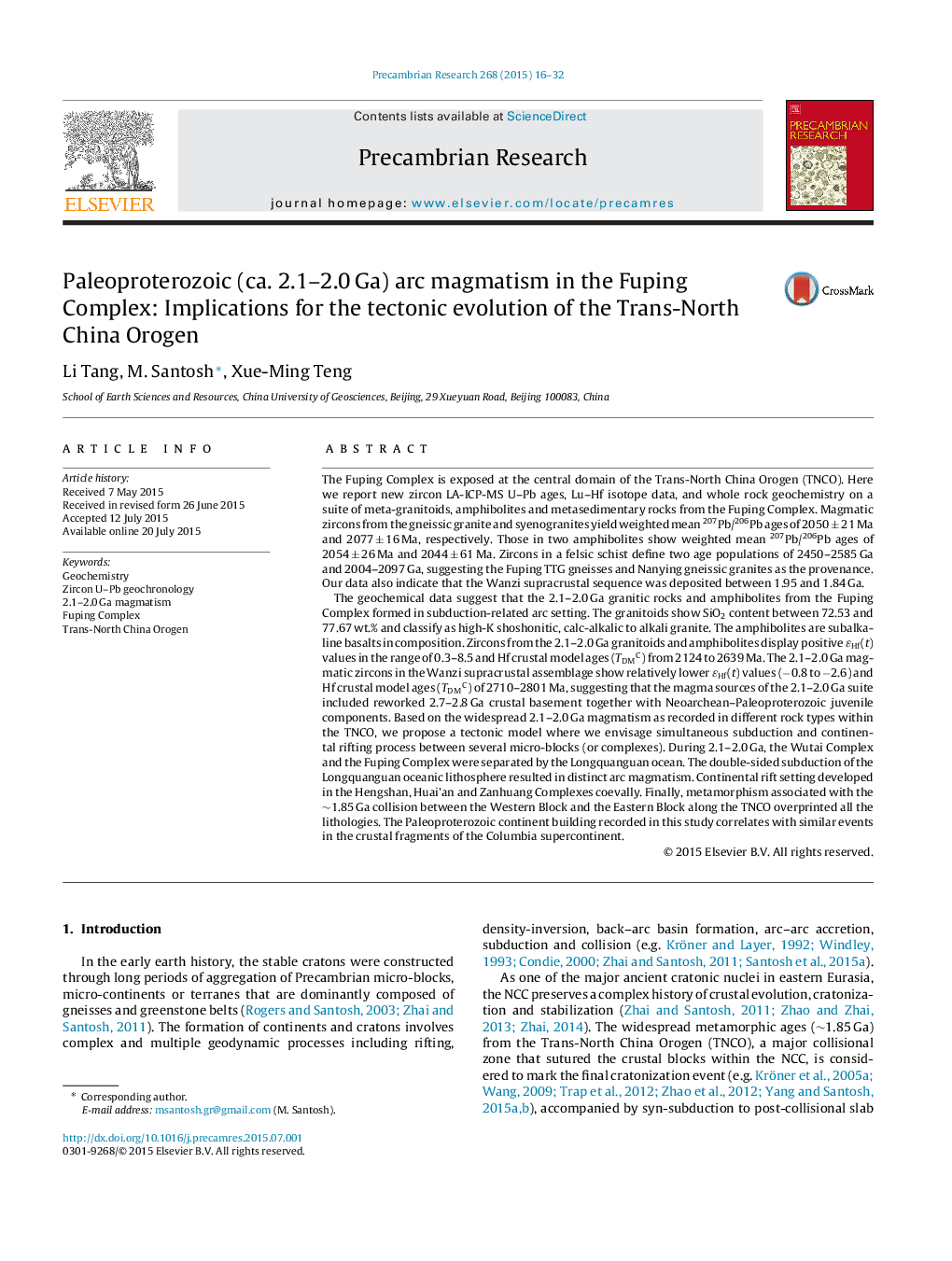| Article ID | Journal | Published Year | Pages | File Type |
|---|---|---|---|---|
| 4722627 | Precambrian Research | 2015 | 17 Pages |
•2.1–2.0 Ga magmatism recorded by a suite of granitoids, amphibolites and metasedimentary rocks.•Divergent double subduction and coeval rifting.•Continent building related to the birth of Paleoproterozoic supercontinent Columbia.
The Fuping Complex is exposed at the central domain of the Trans-North China Orogen (TNCO). Here we report new zircon LA-ICP-MS U–Pb ages, Lu–Hf isotope data, and whole rock geochemistry on a suite of meta-granitoids, amphibolites and metasedimentary rocks from the Fuping Complex. Magmatic zircons from the gneissic granite and syenogranites yield weighted mean 207Pb/206Pb ages of 2050 ± 21 Ma and 2077 ± 16 Ma, respectively. Those in two amphibolites show weighted mean 207Pb/206Pb ages of 2054 ± 26 Ma and 2044 ± 61 Ma. Zircons in a felsic schist define two age populations of 2450–2585 Ga and 2004–2097 Ga, suggesting the Fuping TTG gneisses and Nanying gneissic granites as the provenance. Our data also indicate that the Wanzi supracrustal sequence was deposited between 1.95 and 1.84 Ga.The geochemical data suggest that the 2.1–2.0 Ga granitic rocks and amphibolites from the Fuping Complex formed in subduction-related arc setting. The granitoids show SiO2 content between 72.53 and 77.67 wt.% and classify as high-K shoshonitic, calc-alkalic to alkali granite. The amphibolites are subalkaline basalts in composition. Zircons from the 2.1–2.0 Ga granitoids and amphibolites display positive ɛHf(t) values in the range of 0.3–8.5 and Hf crustal model ages (TDMC) from 2124 to 2639 Ma. The 2.1–2.0 Ga magmatic zircons in the Wanzi supracrustal assemblage show relatively lower ɛHf(t) values (−0.8 to −2.6) and Hf crustal model ages (TDMC) of 2710–2801 Ma, suggesting that the magma sources of the 2.1–2.0 Ga suite included reworked 2.7–2.8 Ga crustal basement together with Neoarchean–Paleoproterozoic juvenile components. Based on the widespread 2.1–2.0 Ga magmatism as recorded in different rock types within the TNCO, we propose a tectonic model where we envisage simultaneous subduction and continental rifting process between several micro-blocks (or complexes). During 2.1–2.0 Ga, the Wutai Complex and the Fuping Complex were separated by the Longquanguan ocean. The double-sided subduction of the Longquanguan oceanic lithosphere resulted in distinct arc magmatism. Continental rift setting developed in the Hengshan, Huai’an and Zanhuang Complexes coevally. Finally, metamorphism associated with the ∼1.85 Ga collision between the Western Block and the Eastern Block along the TNCO overprinted all the lithologies. The Paleoproterozoic continent building recorded in this study correlates with similar events in the crustal fragments of the Columbia supercontinent.
Graphical abstractFigure optionsDownload full-size imageDownload as PowerPoint slide
